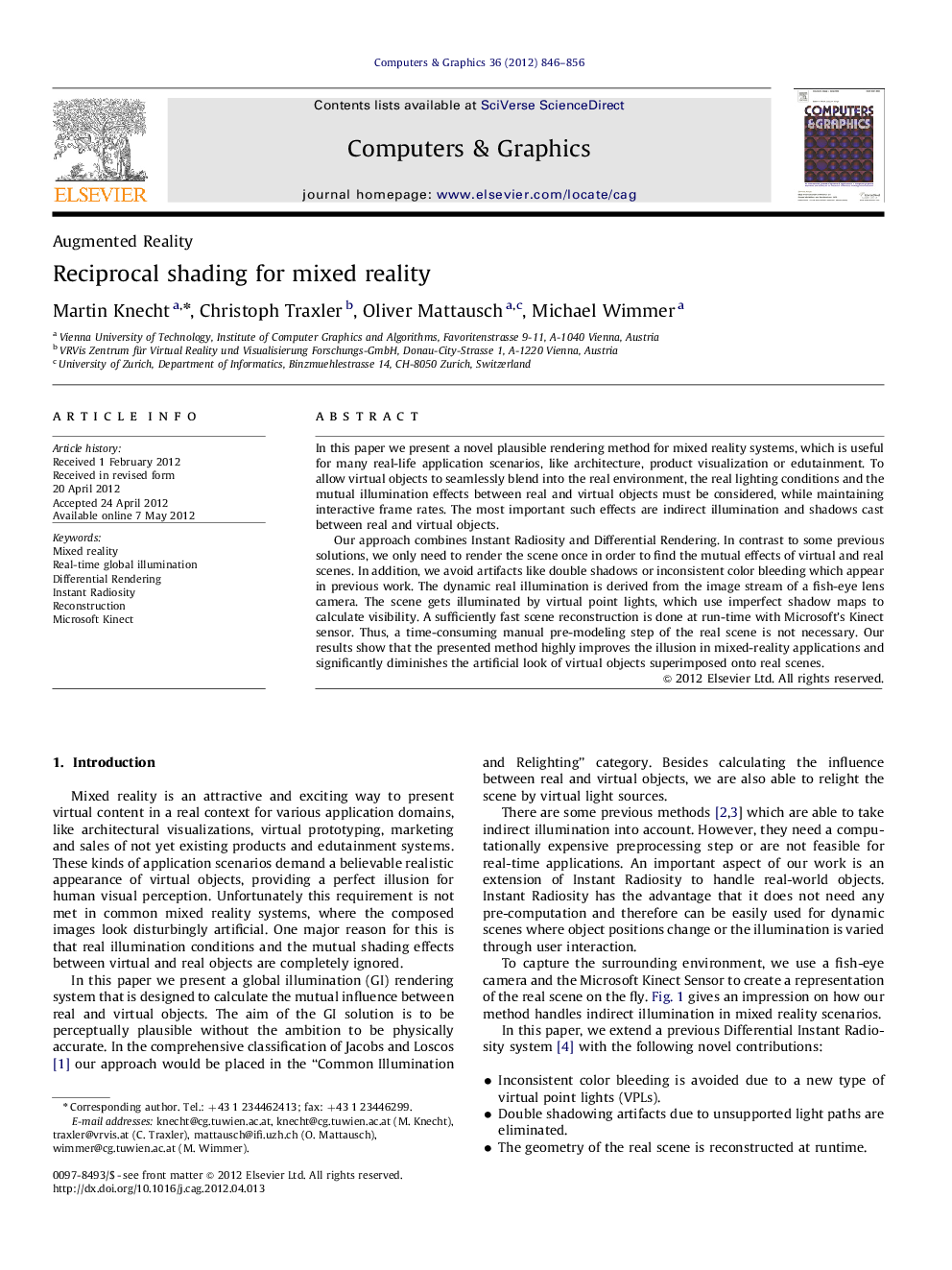| کد مقاله | کد نشریه | سال انتشار | مقاله انگلیسی | نسخه تمام متن |
|---|---|---|---|---|
| 441550 | 691781 | 2012 | 11 صفحه PDF | دانلود رایگان |

In this paper we present a novel plausible rendering method for mixed reality systems, which is useful for many real-life application scenarios, like architecture, product visualization or edutainment. To allow virtual objects to seamlessly blend into the real environment, the real lighting conditions and the mutual illumination effects between real and virtual objects must be considered, while maintaining interactive frame rates. The most important such effects are indirect illumination and shadows cast between real and virtual objects.Our approach combines Instant Radiosity and Differential Rendering. In contrast to some previous solutions, we only need to render the scene once in order to find the mutual effects of virtual and real scenes. In addition, we avoid artifacts like double shadows or inconsistent color bleeding which appear in previous work. The dynamic real illumination is derived from the image stream of a fish-eye lens camera. The scene gets illuminated by virtual point lights, which use imperfect shadow maps to calculate visibility. A sufficiently fast scene reconstruction is done at run-time with Microsoft's Kinect sensor. Thus, a time-consuming manual pre-modeling step of the real scene is not necessary. Our results show that the presented method highly improves the illusion in mixed-reality applications and significantly diminishes the artificial look of virtual objects superimposed onto real scenes.
Figure optionsDownload high-quality image (373 K)Download as PowerPoint slideHighlights
► We removed inconsistent color bleeding artifacts.
► We removed double shadowing artifacts.
► The real scene gets reconstructed during run-time.
Journal: Computers & Graphics - Volume 36, Issue 7, November 2012, Pages 846–856